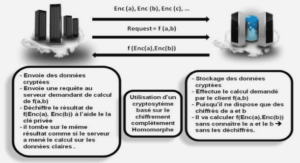The importance of speaking
Speaking plays a significant part both in communication and in language learning
Speaking and Communication
The speaking skill plays an important role in the field of communication. Although the three other skills, Listening, Reading, and Writing, are also important, it is most likely that our success in communication depends entirely on how we develop our thoughts and ideas orally. Furthermore, in our everyday life, we could notice that people prefer having face to face discussions especially when they want to clarify or send important messages. Moreover, when people are in a bad mood, they do not want to listen to what the other says and it is what distinguishes speaking from the other skills because when we speak, we can be heard. Let us take an example of a student who is sad and angry with his teacher because he did not have good mark in a test; he did not want to listen to his teacher’s critics about his work (positive criticism or feedback); however, since both of them are in the same classroom, the learner can hear it. A dictionary of American proverbs (1992) shows that ‘Speak so that he who runs must understand.’ in other words, whoever has ears to listen must hear utterances even though they pretend not to listen. However, it is not only because we want to convey a message that we speak which is part of what is called transactional function of speaking, but we also speak to build a good relationship with other people. Such is the interactional function of speaking. Extracted from Burkart (1998), Brown and Yule (1983) and McCarthy (1991) claim that ‘the main purpose of a transactional talk is to get business done. We could say that transactional talk is task oriented: it is important that the message is clearly expressed so that there is less chance for misunderstanding. An interactional talk is more people oriented: its main purpose is to establish and maintain social relationships.’ In a nutshell, speaking takes a significant part in communication either we want to express ideas or just to develop good relationship with others. According to what we previously mentioned, speaking and communication are interdependent. The following communication model by John B. Carroll shows the relation between them: Intentive Encoding Decoding Interpretive behavior of → behavior of → Message → behavior of → behavior of speaker speaker hearer hearer Fig 2: Communication model ,John B. Carroll (1953) 17 b- Speaking and Language learning No one can deny that a child proves his acquisition of a language by speaking. Therefore, we can deduce that if we want to show acquisition of a language, speaking is one way of proving that we can handle the target language. Moreover, people learn a new language in order to be able to communicate in it. As Rebecca (2006) states in Efrizal (2012), ‘speaking is the first mode in which children acquire language, it is part of daily involvement of most people with language activities and it is prime motor of language change. It also provides our main data for understanding bilingualism and language contact.’ In addition, as language learners, it is difficult to learners to have the ability to use the target language if the opportunity to practise the language is not given to them. Most teachers believe that frequent listening to a language and grammar practice in class can help students to master the new language. This view is not completely wrong but for students to handle the new language, they should explore and discover their development through practice which is the only way to reach perfection; indeed, as the saying goes, ‘Practice makes perfect.’ Rivers (1981) adds that ‘ Students of a new language will not learn to speak fluently merely by hearing speech in class, although this is most important for familiarizing them with accepted forms and the flow of authentic speech, as well as for giving them practice in the receptive side of communication. Teachers will need to give their students many opportunities to practice speaking. They will need to use their imagination in devising situations which provoke the use of the language in the expression of the students’ own meaning.’ As we have seen so far, learners’ ability to use the target language in communication should be one of the aims of teachers in language teaching; especially, when they deal with speaking. Therefore, teaching speaking includes helping students to have communicative competence. Kayi (2006) notes six main points related to teaching speaking; He points out that it is to teach ESL learners a- to produce sounds and sound patterns. b- to use word and sentence stress, intonation patterns and the rhythm of the second language. c- to select appropriate words and sentences according to the proper social setting, audience, situation, and subject matter. d- to organize their thoughts in a meaningful and logical sequence. e- to use language as a means of expressing values and judgments. f- to use the language quickly and confidently with few unnatural pauses, called as fluency. It is clear by now that teaching the speaking skill does not just amount to letting learners to utter words or speeches that come to their mind; its main purpose is to make learners use the language appropriately in different situations in an organized and natural way. Last but not least, according to Stewart and Hjelt (1988) ‘the development of speaking skill should be a goal of every class session. Your students need speaking skill that will give them confidence to use English in their new world- at the supermarket, restaurant, school, bank, and of course with their new friends. Your role is to provide language experience that encourages students to use their new language’ From what we have seen previously, speaking holds a significant role as far as language learning is concerned and one way to encourage learners to use the language in speaking is to resort to fun activities. 1-2-2 Theoretical study of fun activities The word ‘fun’ has several meanings but let us consider some of its definitions or meanings according to the following dictionaries. According to Webster’s third New International dictionary (1961) ‘fun’ means ‘Amusement, enjoyment. Fun implies amusement or an engagement in what interests as an end in itself or applies to what provides this amusement or interest, often also implying a propensity for laughing or for finding a genial cause for laughter or amusement.’ Longman dictionary of contemporary English (1987) defines ‘fun’ as a cause of amusement, enjoyment or pleasure. Also, ‘fun’ refers to something that provides pleasure, amusement, or enjoyment. For Collins English Dictionary and Thesaurus (1993) defines ‘fun’ as a source of enjoyment, amusement, diversion, pleasure, gaiety, or merriment. In its thesaurus, ‘fun’ can be defined as amusement, cheer, distraction, good time, etc. Finally, Longman advance American dictionary (2007) reveals that fun means ‘a fun activity, experience, or place is enjoyable.’ As such, we can deduce that fun activities mean activities which promote amusement, laughter, enjoyment and pleasure. Many people perceive the concept ‘education’ as a very serious and a hard task to perform. However, the use of fun activities leads us to view education differently: the time that we devote to study becomes a good time and the classroom becomes an enjoyable place to acquire knowledge. Therefore, let us consider the importance of 19 fun activities to students, teachers, and the link between fun activities and the teaching of speaking.
Fun Activities and Students
As it was mentioned previously, the aim of this present work is to develop learners’ speaking skill; the most important thing is then to encourage students to use the target language. In reality, there are factors which prevent students from speaking in class whether it is from the teacher or from their classmates as Rivers (1981) reveals that ‘as well as having something to say, the students must have the desire to communicate this message to some person or group of persons. Students who find their teacher unsympathetic and their classmates uncongenial may well feel that what they would like to say can be of little interest. Others may be conscious of their limitations in the new language and feel that, by expressing themselves in it, they are laying themselves open to censure or ridicule. For many reasons like these, students may prefer to remain silent.’ However, we all know that it is only through speaking that we can handle oral skill in language learning as Bright and Gregor (1970) mention ‘Skills can be acquired only through practice.’ Therefore, in the field of language learning especially in developing students’ speaking skill, fun activities present opportunities for students both to create desirable atmosphere and to use the language between them. As Rivers (1972a) cited in Murcia (1979) states ‘it is helpful in channeling the language of flow from student to student rather than from student to teacher.’ Furthermore, when talking about language learning, especially a second or foreign language, in general, students directly think of speaking the language. Most of students are not motivated to learn a new language if the way how the teacher deals with it is like any other subjects; that is, waiting for the teacher explaining the lesson, listening, then copying it in their copybook. As we could notice, young people of today like having ‘fun’ so they are willing to participate in the activity they find that can bring happiness, laughter, and enjoyment to them as Rivers (1981)pointed out ‘They considered it fun and felt it to be important.’ As such, fun activities help students to build in themselves confidence which create the sense of responsibility in them and induce them to take part in class as cited in Bright and Gregor (1970) ‘ Pupil will have to learn to take more responsibility themselves, to rely less on the teacher and to learn more understanding and less rote.’ Obviously, fun activities urge students to speak the learned language. Some students; however, are still waiting for their teacher to explain the lesson for them to copy. The use of fun activities in language teaching does not mean that we totally exclude teachers’ explanation and learners’ taking note in a class session, but it is just a matter of reducing teachers’ talking time and learners’ reproduction of the lesson 20 in their copybook. Moreover, the use of fun activities lessens students’ stress but strengthens their motivation to use the language in class since many of them may not have the opportunity outside their classroom.





